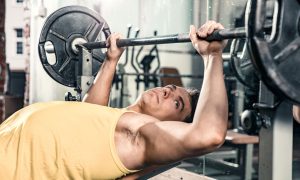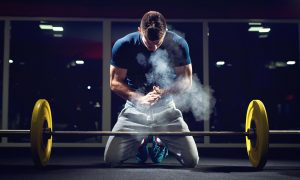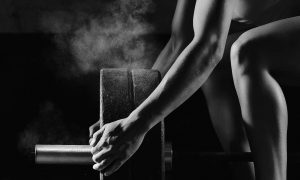Four Reasons Why You Need To Be Doing More Compound Exercises

|
|
When it comes to training in the gym, how many of you can honestly say that you’re giving it your all and know exactly what you’re doing day in and day out? Of course there will be seasoned experts out there that know exactly what they’re doing but there are also individuals that perhaps need a little help and need steering in the right direction when it comes to training. They may walk into the gym, bust their butts lifting weights and working out, but due to the fact that they don’t actually fully understand why they’re performing each exercise, or indeed which exercises work which specific muscle groups, how can they expect to benefit? Weight and resistance training is a science and is incredibly complex to understand. If you walk into the gym, grab a set of weights, and perform whichever exercises you feel like performing at the time, you won’t get anywhere fast, no matter how hard you work. Take compound exercises for example. Compound exercises are hugely beneficial for a number of different ways, which we’ll be covering in more detail shortly, but before that, how many of you know what a compound exercise is?
What are compound exercises?
Put simply, compound exercises, sometimes referred to as compound lifts or compound movements, are exercises which work more than one muscle group simultaneously. They’re basically multi-muscle movements and exercises as opposed to isolation exercises. Look at the chest for example: dumbbell flyes are isolation exercises that isolate the pecs, whereas the flat bench barbell press, another chest exercise, is a compound movement because not only does it work the chest, it also works the triceps, the shoulders, and even the core at the same time. Many free weight exercises are compound exercises, though there are exceptions, including pull ups. Common compound exercise examples include:
• Squats
• Deadlifts
• Bench presses
• Push ups
• Overhead presses
• Clean and presses
• Upright rows
• Bent over rows
• Dips
• Pull ups
There are other examples but these are the most common. We’ll now take a look at some of the main benefits of compound exercises that will make you want to include more of them into your next workout.
You burn more fat
Compound movements work more than one muscle group at the same time, which in turn means that the body is forced to work harder with each exercise, and indeed with each repetition for that matter. The harder the body works, the more energy it requires and the more energy it requires the more calories are burnt off. Not only do you burn more calories during the workout, but because you’ve pushed your body so hard during the workout, you also burn more calories following your workout as well. This is known as the “afterburn effect” and it basically works by increasing your metabolism so that it works harder than usual for a prolonged period of time following your workout. This means that you can turn your body into a fat burning machine so that you burn fat even whilst you rest.
You build a more rounded physique
Think about it, if you happen to train one body part more frequently than others, and you just so happen to base much of your routine on isolation exercises, the body part that you train the most is more likely to look bigger and fuller than others. Say you enjoy training arms, your arms may be huge, whereas your chest, legs, shoulders and back may be lagging, leaving you with an uneven looking body. Compound exercises work numerous muscle groups at once, which means that with each exercise you’re working several parts of your body so that you grow evenly and attain a more symmetrical and well-rounded physique.
You spend less time at the gym

Even if you enjoy working out at the gym, you will still need time away and time to yourself so that you can relax and unwind with friends and family perhaps. Another great benefit of compound exercises is that they require you to spend less time at the gym than if you based your training off of isolation exercises. Of course isolation exercises should still be included as they’re incredibly beneficial as well, but the majority of your workout should come from compound movements. Say you wish to work two or three body parts per session. If you focused on isolation exercises it would take you forever to complete a workout. With compound movements however, you can pre-exhaust certain muscle groups whilst focusing on one or two major ones. You’re working numerous muscle groups at once, and as a result your gym time will be reduced vastly. As an example: If you wanted to build your biceps, in order to really push them to their limits by simply isolating them, you’d need to perform several exercises and sets before they even received a pump. If you trained your back with bent over rows and pull ups beforehand however, as these back exercises also work the biceps, by the time you actually focus on bicep exercises, your arms will look bigger and fuller than ever.
You get stronger
For people looking to improve their strength: powerlifters and strongmen and women for example, compound exercises are absolutely essential. As each exercise recruits more than one muscle group at a time, your muscles will work in synergy with one another and will be able to handle much heavier loads than before. As another example: think of chest training. If you isolate your chest, your chest could be pretty strong, but other muscle groups simply would not be. With a compound movement such as barbell bench press however, you also strengthen your triceps, shoulders, and core and so your muscles are able to lift much heavier weights than if you’d focused on isolation movements. This is not only beneficial in the gym, it’s beneficial in everyday life as well because it helps to increase functional strength. That means that activities such as lifting furniture or heavy rocks in the garden will be much easier for you.














